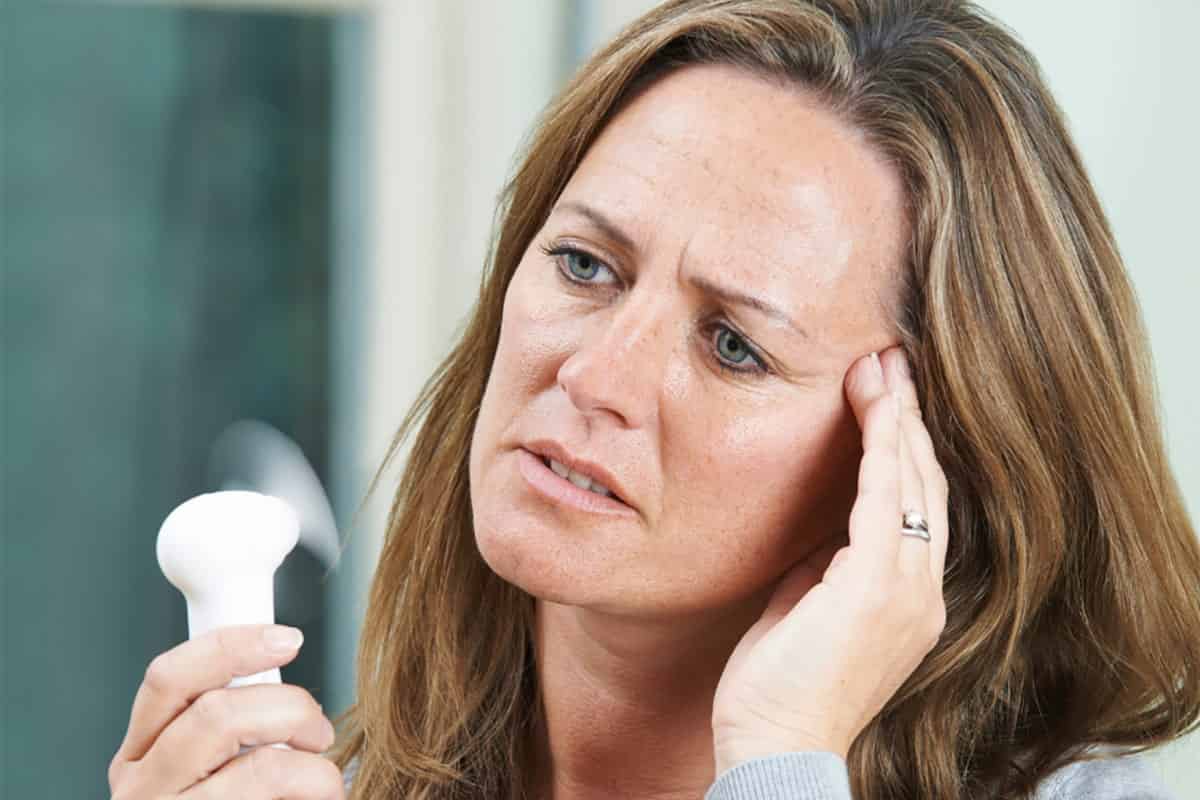Common Hot Flash Triggers

You’re probably familiar with the sensation: heat rising in your body, sweating and flushing red in your chest, neck and face. Hot flashes are one of the first signs that the menopause transition is underway.
An estimated 80% of women have hot flashes during their menopause transition, increasing in frequency and severity from early to late perimenopause. They typically last for four to seven years, but some women experience them for ten or more years. That’s a long time to be peeling your clothes on and off and standing in front of the freezer seeking relief!
Regardless of whether you try prescription hormonal or non-hormonal medications for managing your hot flashes, tracking and identifying your hot flash triggers is an important first step in relief. In fact, your doctor may ask you about your triggers or ask you to keep a diary for several months before prescribing a course of treatment.
Tracking Your Triggers
Hot flashes can make you feel like you’ve lost control. The first step in taking back the reins is to track your hot flashes for a week or two.
Spend a few minutes each day logging your hot flashes in the Midday app to gain insight into factors that may be triggering or making your hot flashes more severe. Follow these easy steps to get started.
Daytime Hot Flash Tracking
- Tap the yellow (+) button in the app’s navigation bar to log a hot flash.
- Rate its intensity on a scale of 1-5.
- Look at the list of triggers and tap on any that may have present in the last 90 minutes.
Nighttime Hot Flashes Tracking
- For hot flashes during sleep, log your hot flashes in the morning shortly after waking when your memory is strongest.
- Adjust the time on the log to the best of your recollection.
- Tap on any triggers from the night before that may have caused you to hot flash during sleep. Examples include drinking red wine in the evening or feeling anxious before you went to bed.
Common Hot Flash Triggers
Hot flash triggers can be generally separated into the four following categories. Some factors are well-known and studied, while others are not as well understood.
Food & Beverages
- Caffeine. Reduce your caffeine consumption by avoiding energy drinks, caffeinated sodas, and coffee. Switch to green and herbal teas for less caffeine.
- Red wine & other alcoholic beverages. All alcoholic beverages cause some vasodilation (widening of blood vessels), making you feel warmer and possibly triggering a hot flash. Experiment with white wine or dilute your red wine with sparkling water. Or, try a mocktail like club soda with a splash of bitters and a twist of lime.
- Hot beverages. Stay cool by switching to iced, decaffeinated versions of your favorite hot beverages.
- Spicy food. Spicy food also causes vasodilation, triggering hot flashes. Try eliminating spicy foods from your diet, especially dishes prepared with hot peppers and chili powders.
- Hot food. Hot foods like soup and stews may trigger hot flashes. Focus on cold or room-temperature foods, especially on a hot day.
- Heavy meals. Eating a big meal or one with heavy foods that take longer to digest may cause more hot flash activity, especially if you consume the meal in the evening. Eat smaller easy-to-digest meals.
- Sugar. High blood sugar, insulin resistance, and metabolic syndrome have been linked to a higher incidence of hot flashes in menopausal women. Switching to a plant-based diet low in sugar can help with hot flashes and weight gain.
- Chocolate. Consuming chocolate can cause a spike in blood sugar and trigger a hot flash. See if switching to extra dark 85% cacao or higher in a very small amount helps.
Environment
- Warm room. Keep your house cool. Sleep in a room that is cooler than 67 degrees Fahrenheit. Open a window or use a small portable fan for a cooling breeze.
- Hot weather. If hot weather is unavoidable, dress in light, breathable clothing, wear a hat, and keep an ice-cold bottle of water at hand.
Lifestyle
- Smoking. One of the most well-researched hot flash triggers is smoking. Quitting is hard, we know. Check out smokefree.gov for options to help you quit.
- Exercise. Exercise can trigger hot flashes, but some evidence indicates that an exercise program can overall reduce hot flashes. With so many health benefits to exercise, it makes sense to keep up your routine and cope with the hot flashes that may result. However, you may need to prepare for hot flashes if exercise turns out to be one of your triggers.
- Tight-fitting clothes. Wear loose, comfortable clothing made of cotton and other natural fabrics to help absorb perspiration.
- Heavy clothes. Dress in light layers so that you can remove some clothing if you suddenly feel hot. Think t-shirts with lightweight cardigans and a chic pashmina scarf. Dresses, skirts, and loose pants are good choices too.
- Hair appliances. Besides heating up your body and triggering a hot flash, blow dryers and curling and flat irons can damage aging hair. Try air-drying your hair or adopting a new easy-to-care-for style.
Emotions
When you have intense or stressful emotions, blood rushes to the skin’s surface and can trigger a hot flash. The emotions that can trigger hot flashes include:
- Stress
- Anxiety
- Anger
- Nervousness
Mindfulness techniques like deep breathing, meditation, and yoga are good options for managing emotions that may be triggering hot flashes. Try Midday’s immersive guided meditations and deep breathing programs for hot flashes in the Wellness library.
Stay Cool
By understanding your unique hot flash experience, you can systematically eliminate triggers and see how your body responds. When you understand and manage your triggers, you’ll see symptom improvement, feel a restored sense of control over your body, and feel less limited by hot flashes.
Around 10-20% of people have hot flashes that are severe and don’t respond well to self-management. Share your hot flash diary with a clinician trained in menopausal care and discuss your options for relief. Your provider will appreciate having the data your diary provides and can make data-driven recommendations for hot flash management.
Hot flashes can be a major struggle. With help from Midday and a little perseverance, you can gain control over this bothersome symptom.
Sign up for more unique women’s health content
By submitting this form, you agree to the Lisa Health Privacy Policy and Terms of Use


